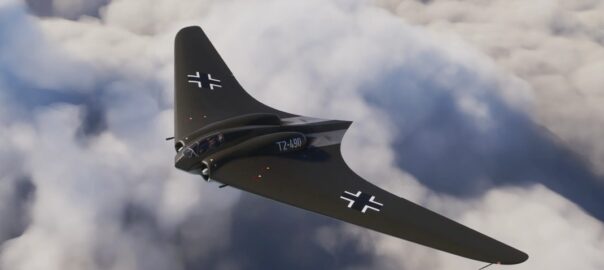The Lockheed U-2, affectionately (or perhaps fearfully) known as the “Dragon Lady,” is a testament to enduring engineering and a remarkable piece of Cold War history. More than just an aircraft, it’s a symbol of clandestine operations, cutting-edge technology, and the unwavering pursuit of intelligence. Decades after its initial design, the U-2 continues to serve as a vital asset for the United States, proving that some aircraft designs are simply timeless.
Born out of the urgent need to gather intelligence deep within the Soviet Union during the height of the Cold War, the U-2 was a product of the legendary Lockheed Skunk Works. Under the leadership of the brilliant engineer Clarence “Kelly” Johnson, the Skunk Works team delivered a high-altitude reconnaissance platform unlike anything the world had seen.
A Dragonfly on the Edge of Space:
The U-2’s defining characteristic is its extreme altitude capability. Designed to fly at altitudes exceeding 70,000 feet (21,000 meters), it operates on the very edge of space. This extreme altitude made it virtually undetectable to ground-based radar and interceptor aircraft of the time. Its long, glider-like wings, spanning over 103 feet, provide exceptional lift in the thin air, allowing it to loiter for extended periods and capture high-resolution images and signals intelligence.
The aircraft is notoriously difficult to fly, requiring specialized training and a unique landing technique. Pilots must execute a “stall landing,” essentially flying the aircraft onto the runway, as its long wings generate so much lift that a traditional landing approach is nearly impossible. Pilots often rely on a chase car, driven by another pilot, to provide critical altitude and speed information during the final approach.
Cold War Superstar, Modern Marvel:
The U-2 achieved notoriety early in its career. Its images of Soviet missile sites in Cuba in 1962 were instrumental in resolving the Cuban Missile Crisis, providing irrefutable proof of Soviet aggression. However, its clandestine missions also came with risks. In 1960, a U-2 piloted by Francis Gary Powers was shot down over the Soviet Union, sparking an international incident that further heightened Cold War tensions.
Despite the emergence of satellite reconnaissance technology, the U-2 has not been retired. Its agility, flexibility, and ability to operate from a variety of locations have kept it relevant. The U-2 boasts several key advantages over satellites:
- On-demand tasking: Unlike satellites, which follow a pre-determined orbit, the U-2 can be deployed quickly to gather intelligence in specific areas, responding to dynamic situations.
- Higher resolution imagery (in some cases): While satellite imagery offers a broad perspective, the U-2 can provide extremely detailed imagery of specific targets.
- Flexibility in payload: The U-2 can be equipped with a variety of sensors, including cameras, radar, and electronic intelligence (ELINT) equipment, allowing it to adapt to evolving intelligence needs.
A Future in Flux:
The future of the U-2 program remains a topic of debate. Modern drones, like the RQ-4 Global Hawk, offer similar capabilities with the added benefit of being unmanned. However, the U-2’s dedicated team of pilots, its proven track record, and its ability to adapt to new technologies continue to make it a valuable asset.
The U-2 has been constantly upgraded throughout its lifespan, receiving new engines, sensors, and communication equipment. This commitment to modernization has ensured its continued relevance in the 21st century.
In Conclusion:
The Lockheed U-2 is more than just an aircraft; it’s a symbol of innovation, resilience, and the enduring need for intelligence. From its Cold War beginnings to its continued service in modern conflicts, the U-2 has proven its worth time and again. Whether it remains in service for another decade or is eventually replaced by newer technologies, the “Dragon Lady” will forever hold a prominent place in aviation history and the annals of intelligence gathering. Its legacy as a high-flying spy plane, pushing the boundaries of technology and courage, is firmly secured.









